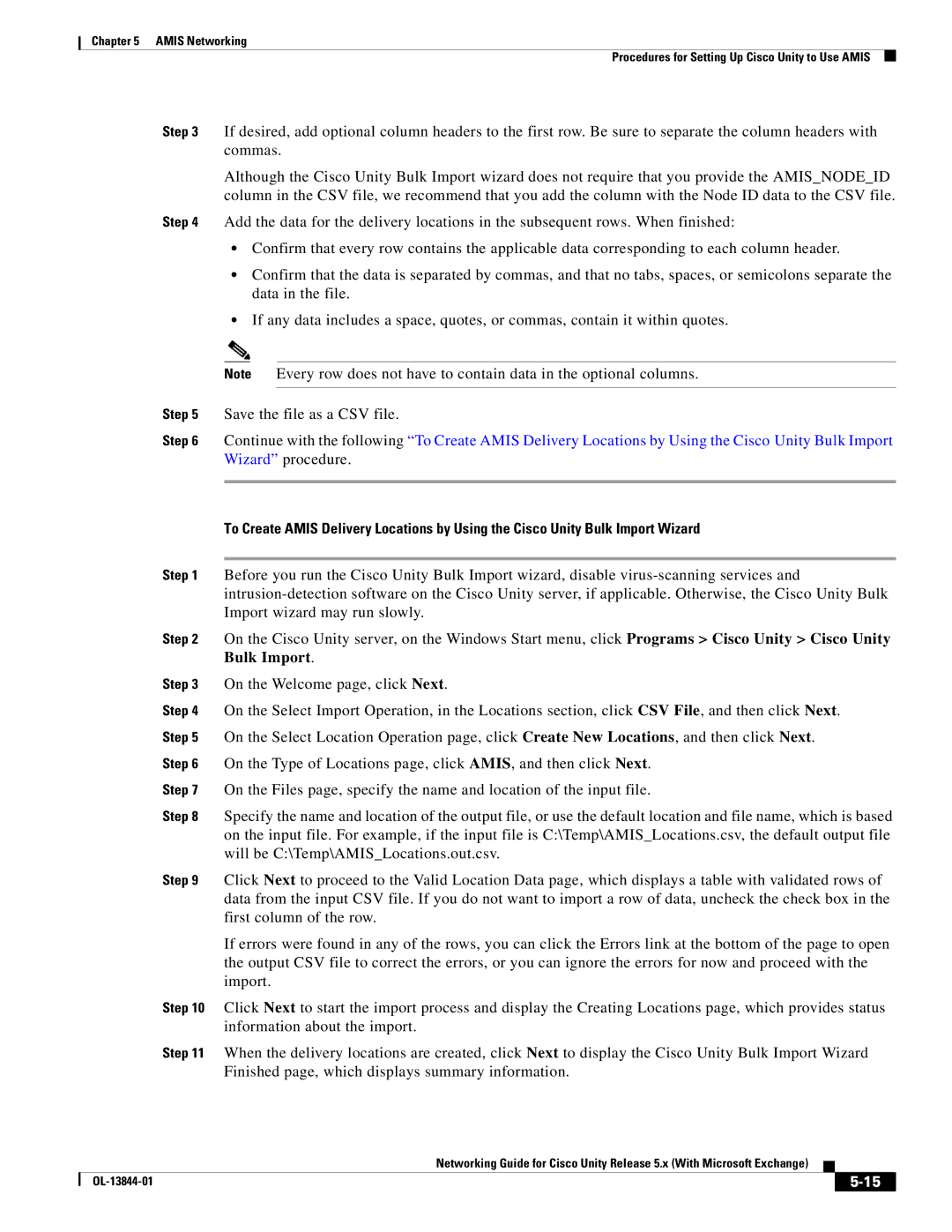
Chapter 5 AMIS Networking
Procedures for Setting Up Cisco Unity to Use AMIS
Step 3 If desired, add optional column headers to the first row. Be sure to separate the column headers with commas.
Although the Cisco Unity Bulk Import wizard does not require that you provide the AMIS_NODE_ID column in the CSV file, we recommend that you add the column with the Node ID data to the CSV file.
Step 4 Add the data for the delivery locations in the subsequent rows. When finished:
•Confirm that every row contains the applicable data corresponding to each column header.
•Confirm that the data is separated by commas, and that no tabs, spaces, or semicolons separate the data in the file.
•If any data includes a space, quotes, or commas, contain it within quotes.
Note Every row does not have to contain data in the optional columns.
Step 5 Save the file as a CSV file.
Step 6 Continue with the following “To Create AMIS Delivery Locations by Using the Cisco Unity Bulk Import Wizard” procedure.
To Create AMIS Delivery Locations by Using the Cisco Unity Bulk Import Wizard
Step 1 Before you run the Cisco Unity Bulk Import wizard, disable
Step 2 On the Cisco Unity server, on the Windows Start menu, click Programs > Cisco Unity > Cisco Unity Bulk Import.
Step 3 On the Welcome page, click Next.
Step 4 On the Select Import Operation, in the Locations section, click CSV File, and then click Next. Step 5 On the Select Location Operation page, click Create New Locations, and then click Next. Step 6 On the Type of Locations page, click AMIS, and then click Next.
Step 7 On the Files page, specify the name and location of the input file.
Step 8 Specify the name and location of the output file, or use the default location and file name, which is based on the input file. For example, if the input file is C:\Temp\AMIS_Locations.csv, the default output file will be C:\Temp\AMIS_Locations.out.csv.
Step 9 Click Next to proceed to the Valid Location Data page, which displays a table with validated rows of data from the input CSV file. If you do not want to import a row of data, uncheck the check box in the first column of the row.
If errors were found in any of the rows, you can click the Errors link at the bottom of the page to open the output CSV file to correct the errors, or you can ignore the errors for now and proceed with the import.
Step 10 Click Next to start the import process and display the Creating Locations page, which provides status information about the import.
Step 11 When the delivery locations are created, click Next to display the Cisco Unity Bulk Import Wizard Finished page, which displays summary information.
|
| Networking Guide for Cisco Unity Release 5.x (With Microsoft Exchange) |
|
| |
|
|
| |||
|
|
|
|
| |
|
|
|
| ||
